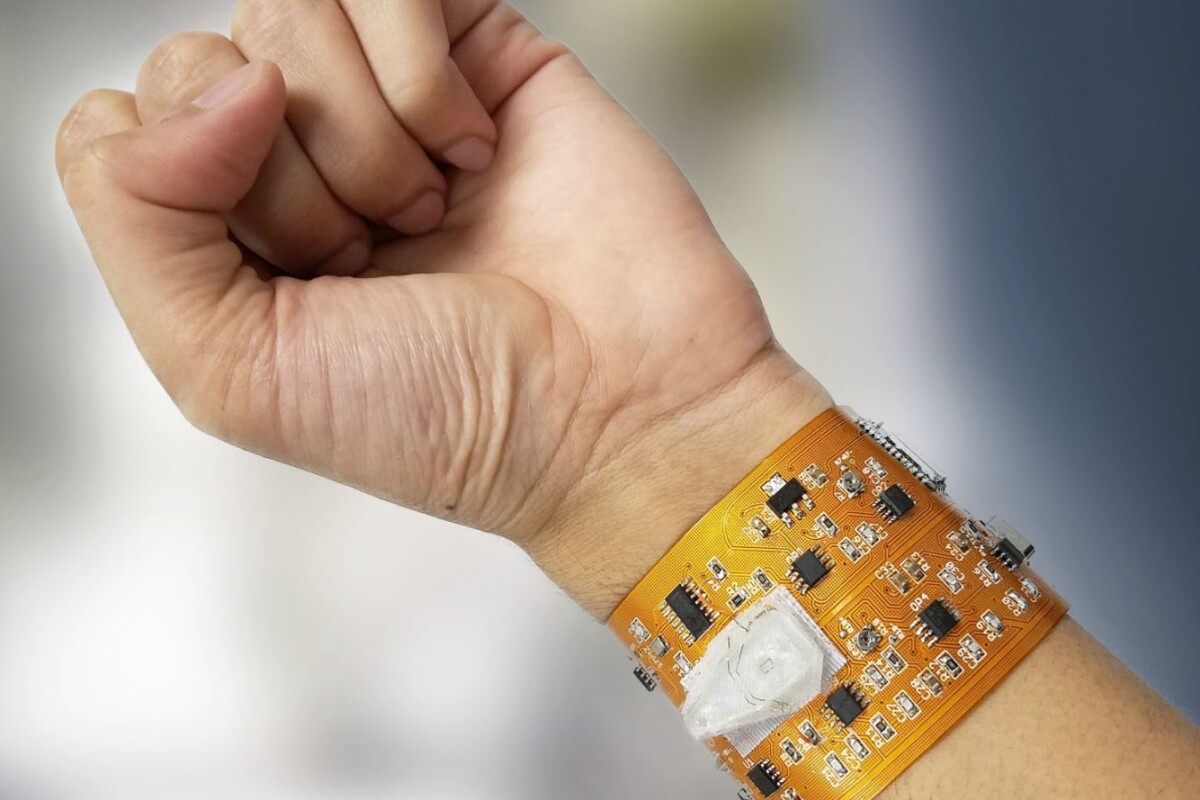This design for a smart wristband from engineers at Rutgers University promises a new generation of wearable health and environment trackers. The prototype device is designed to wirelessly connect to a smartphone that can then process and display a broad assortment of biomarkers including blood cell counts.
One of the big advances demonstrated in this new smart wristband is the bringing together of a variety of different recent technological innovations, creating a singular and cost-effective wearable capable of capturing biomedical information that previously needed expensive and bulky lab equipment to measure. This prototype includes a microfluidic sensor, a microcontroller and a Bluetooth module, all built into a superhero-style wristband.
"It's like a Fitbit but has a biosensor that can count particles, so that includes blood cells, bacteria and organic or inorganic particles in the air," explains Mehdi Javanmard, senior author of the new study.
The current device demonstrates effective measurements of blood cells delivered into a microfluidic sensor. At this stage the blood samples must be separately gathered via a pin-prick process, but the researchers suggest that a future goal would be to incorporate either tiny micro needles or catheter-based impedance sensors into the wristband, so it can continuously monitor specific blood levels.
"There's a whole range of diseases where blood cell counts are very important," says Javanmard. "Abnormally high or low white blood cell counts are indicators of certain cancers like leukemia, for example."
As Javanmard also suggests, the system is designed to be easily modified to sense a variety of different health biomarkers and potentially also airborne environmental hazards. "To detect airborne particles, we could add a module to sample air, or perhaps pre-concentrate air particles in liquid, and then run the device," says Javanmard.
The rapid pace of technological development in miniaturizing and automating blood testing systems that previously needed labor-intensive analytical techniques was demonstrated by a separate team from Rutgers back in June, with the reveal of an automated system for drawing and analyzing blood samples. That impressive device, again utilizing microfluidic sensor platforms, was a self-contained robotic system that both takes blood samples, and instantly analyzes them.
This new wearable device is a little more limited in what it can initially sense, but the overall system promises easily interchangeable microfluidic channels designed to sense whatever biomarker a person needs. The entire architecture of the system, including its ability to transfer data directly to an associated smartphone, points to exciting future potential for personalized wearable devices that can be tailored to individual needs, with data easily transferred to clinicians for remote observations.
The new research was published in the journal Microsystems & Engineering.
Source: Rutgers University





